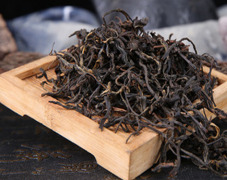Saccharomyces cerevisiae (Baker's yeast/Brewing yeast)
Product description
Saccharomyces cerevisiae is the most widely used microbial strain all over the world since many centuries, knowingly or unknowingly. This strain has its applications in various industries like brewery, fermentation, bakery, feed, bio-remediation and many others. It is commonly known as Baker’s yeast or Brewer’s yeast.
Saccharomyces cerevisiae yeast is a single cell microorganism which specialized in fermentation of broad range of sugar molecules in anaerobic condition like - glucose, fructose, maltose, etc. and they produces carbon dioxide, ethanol and many other organic components as a by-product.
Some of the industrial uses of Saccharomyces cerevisiae are:
Brewing Industry: It is also referred to as a brewer's yeast worldwide due to its broad applications in the brewing industry, especially in the wine industry. The relationship between Saccharomyces cerevisiae and wine dates back into Egyptian history as ribosomal DNA of Saccharomyces cerevisiae was found in the wine container dating back to 3150 BC and it was confirmed by Louis Pasteur in 1860 that yeast can be used for wine making.
Some of the advantages of using Saccharomyces cerevisiae in the wine industry are as follows:
Saccharomyces cerevisiae strain is mixed with floor and other ingredients to make a dough and then it starts the fermentation. The yeast requires optimum condition of 34–38 °C, and pH 4.0–5.2.
Some of the advantages of using Saccharomyces cerevisiae in baking industry are as follows:
Bio-ethanol Production: Used in the bio-ethanol production by the fermentation process.
Animal Feed: Used as animal feed additives as it complement the digestive system of animals in proper digestion and maintaining good health.
Read more
Saccharomyces cerevisiae yeast is a single cell microorganism which specialized in fermentation of broad range of sugar molecules in anaerobic condition like - glucose, fructose, maltose, etc. and they produces carbon dioxide, ethanol and many other organic components as a by-product.
Some of the industrial uses of Saccharomyces cerevisiae are:
Brewing Industry: It is also referred to as a brewer's yeast worldwide due to its broad applications in the brewing industry, especially in the wine industry. The relationship between Saccharomyces cerevisiae and wine dates back into Egyptian history as ribosomal DNA of Saccharomyces cerevisiae was found in the wine container dating back to 3150 BC and it was confirmed by Louis Pasteur in 1860 that yeast can be used for wine making.
Some of the advantages of using Saccharomyces cerevisiae in the wine industry are as follows:
- Improvement of physicochemical properties.
- Reducing the ethanol content.
- Enhancement of aroma.
- High yield in fermentation.
Saccharomyces cerevisiae strain is mixed with floor and other ingredients to make a dough and then it starts the fermentation. The yeast requires optimum condition of 34–38 °C, and pH 4.0–5.2.
Some of the advantages of using Saccharomyces cerevisiae in baking industry are as follows:
- Break the complex carbohydrates like starch, sucrose, etc. into simpler ones like glucose and fructose.
- Increases the bread dough volume.
- High yield due to high rate of fermentation.
- Texture and softness enhancer.
Bio-ethanol Production: Used in the bio-ethanol production by the fermentation process.
Animal Feed: Used as animal feed additives as it complement the digestive system of animals in proper digestion and maintaining good health.
Company information
Saccharomyces cerevisiae (Baker's yeast/Brewing yeast)
Specifications
| Sales markets | Western Europe; Eastern Europe; Middle East; Asia; Australia; North America; Africa; Central/South America |
|---|---|
| Supplied from | India |
| Product Applications | Bakery; Beverages; Brewing; Healthy Food & Beverages; Pet Food / Animal Nutrition |
More products from BIOVEN INGREDINETS
Products from other suppliers
Saccharomyces cerevisiae (Baker's yeast/Brewing yeast)







